- Alexandra House has been considered one of the finest warehouses in the country
- The carved elephant heads on Alexandra House represent the ‘Jumbo’ bootlace brand known throughout the world
- Following damage to its factories during World War II, Faire Bros. bought a Spitfire to support the war effort
A warehouse for bootlaces
Alexandra House, a remarkable four storey building on the corner of Rutland Street and Southampton Street, was built originally to store bootlaces. Completed in 1897, it was designed by Leicester architect Edward Burgess for Faire Bros. Ltd., one of the largest boot and shoe lace manufacturers and exporters in the world.
Architectural historian Nikolaus Pevsner described Alexandra House as “the finest warehouse in Leicester and one of the finest in the country”. All the ground floor windows are embossed with a floral design incorporating the company name and the building is clad in buff terracotta with a polished marble plinth. The main entrance is on the corner and has a hexagonal entrance lobby with a domed vault decorated with blue and gold tiles. On the corner of Southampton Street the street name has been incorporated into the terracotta on the side of the building.
Faire Bros. Ltd – a family business
Faire Bros. Ltd was founded by Watkin-Lewis Faire who came to Leicester from Derby in 1850. He went into business with his brother, George Robert Faire and opened a factory in Parliament Street, off Welford Road. During the 1860s the company is listed in trade directories at a number of addresses within the city. George Robert Faire left the company in the 1870s but Watkin-Lewis Faire continued the business until his death in 1892. His sons, John Edward and Samuel ran the company after his death.
Faire Bros & Co. Ltd and Alexandra House
In 1886 Faire Bros & Co Ltd opened a warehouse in London and shortly afterwards the St George’s Mills premises opened in nearby Wimbledon Street, Leicester. However, these proved to be inadequate and it was decided to build a new warehouse adjacent to the company’s existing warehouse in Southampton Street. Alexandra House at 47 Rutland Street, Leicester was formally opened by Mrs Watkin-Lewis Faire in January 1898.
The company expands across the East Midlands
In 1900 a limited company was formed – Faire Bros & Co Ltd. The following year a period of acquisition began when the company acquired a factory in Borrowash, Derby which produced braiding and woven elastics. In Leicester jacquard looms were installed by W. Ernest Percy for the manufacture of woven labels. The programme of expansion continued with the acquisition of controlling interests in Joseph Burgess and Son Ltd of Coalville (manufacturer of elastics) and John Taverner and Sons Ltd of Burton upon Trent (manufacturer of tapes and rigid webs). The company also opened a factory in Mansfield to make stiffeners and insoles, while a plant in Leicester made heels for ladies shoes under the name of ‘Wellington Heel Company’.
In 1905 Samuel Faire was knighted for his ‘social and industrial services to the City of Leicester’. He was the High Sheriff of Leicestershire in 1919 and was Lieutenant Colonel of the Leicester Volunteer Regiment.
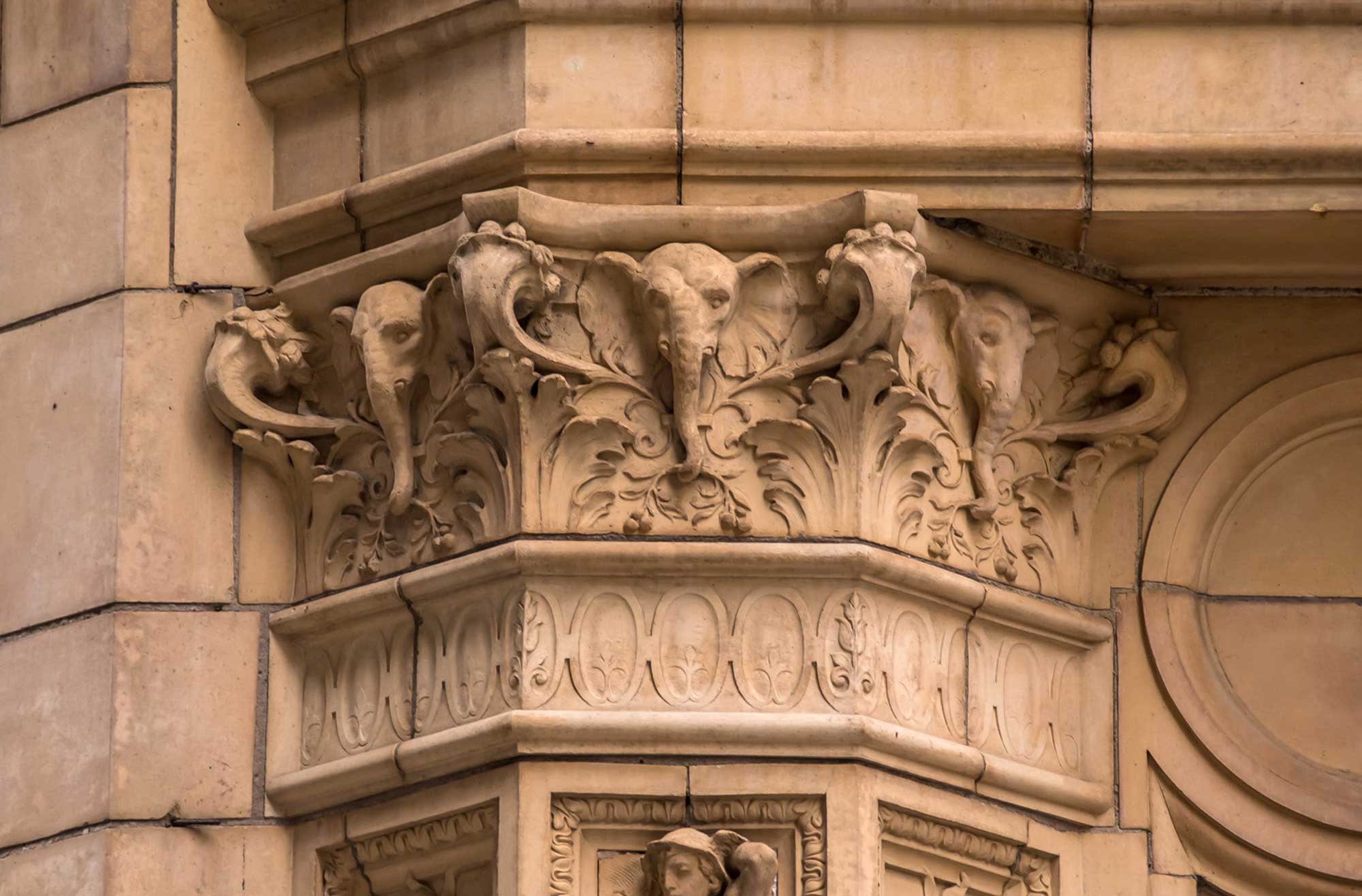
10 factories supported from headquarters in Rutland Street, Leicester
By the outbreak of the First World War Faire Bros & Co Ltd were major suppliers to the corsetry manufacturers, the hosiery and the footwear industries, in addition to providing the wholesale haberdashery trade with smallwares. By the end of the 1920s the firm owned 10 factories around the country and at its height it employed around 2,000 people at the Rutland Street Head Office, where the building had electric lighting throughout, six hydraulic lifts and a private telephone exchange which linked the 100 telephones which were located within the warehouse and the factory.
Between 1910 and 1939 significant progress was made in building up the production of elastics, bindings and shoe findings. The manufacture of braces and suspenders was developed in the Leicester factory with many other side lines for the haberdashery trade. By the 1940s Faire Bros. & Co was one of the largest firms of shoe mercers in the world and was a large exporter. Many of the Faire Bros. & Co. bootlace brands, such as “Jumbo” and “Old England” could be purchased throughout the world.
Faire Bros. supports the war effort with a Spitfire
During World War II the Leicester premises suffered bomb and fire damage but, undeterred, the firm continued to operate from Rutland Street. The London office and warehouse were destroyed in the first serious air raid on the city. After these events the company purchased a Spitfire and presented it to the RAF Fighter Command. It was named ‘St George’ after the Faire Bros chief trademark.
The company made a significant contribution to the war effort during World War II. The firm was proud of the huge quantities of items produced for the various Supply Ministries which included 21,500,000 yards of silk and nylon parachute cords, 9,000,000 boot and shoe laces and 12,500,000 soles and heels for the Footwear Repair Programme.
Faire Bros. supports the corsetry worn by ‘Women in Action’
The ingenuity of Faire Bros. was also evident during the war years. In response to the severity of the rubber shortage Faire Bros. invented the ‘Natty Grip’ suspender fitting. It was described as an ingenious suspender fitting which provided an excellent substitute for rubber ends. During 1941 Faire Bros. ran an advertising campaign featuring ‘Women in Action’, with illustrations including topical female roles such as the WREN (Women’s Royal Naval Service). The adverts were for the ‘Gripknit’ product, drawing attention to its flexibility and adaptability for corsetry worn by women in strenuous war-time occupations.
Alexandra House and Faire Bros. today
Another invention linked to Alexandra House is the treasury tag, still made by Faire Bros. today and used in offices around the world. By 1994 Faire Bros. relocated all production to the Hilltop Industrial Estate, Coalville, where they had a braiding factory. Alexandra House was restored in the mid-2000s and was converted into 175 apartments.
Gallery

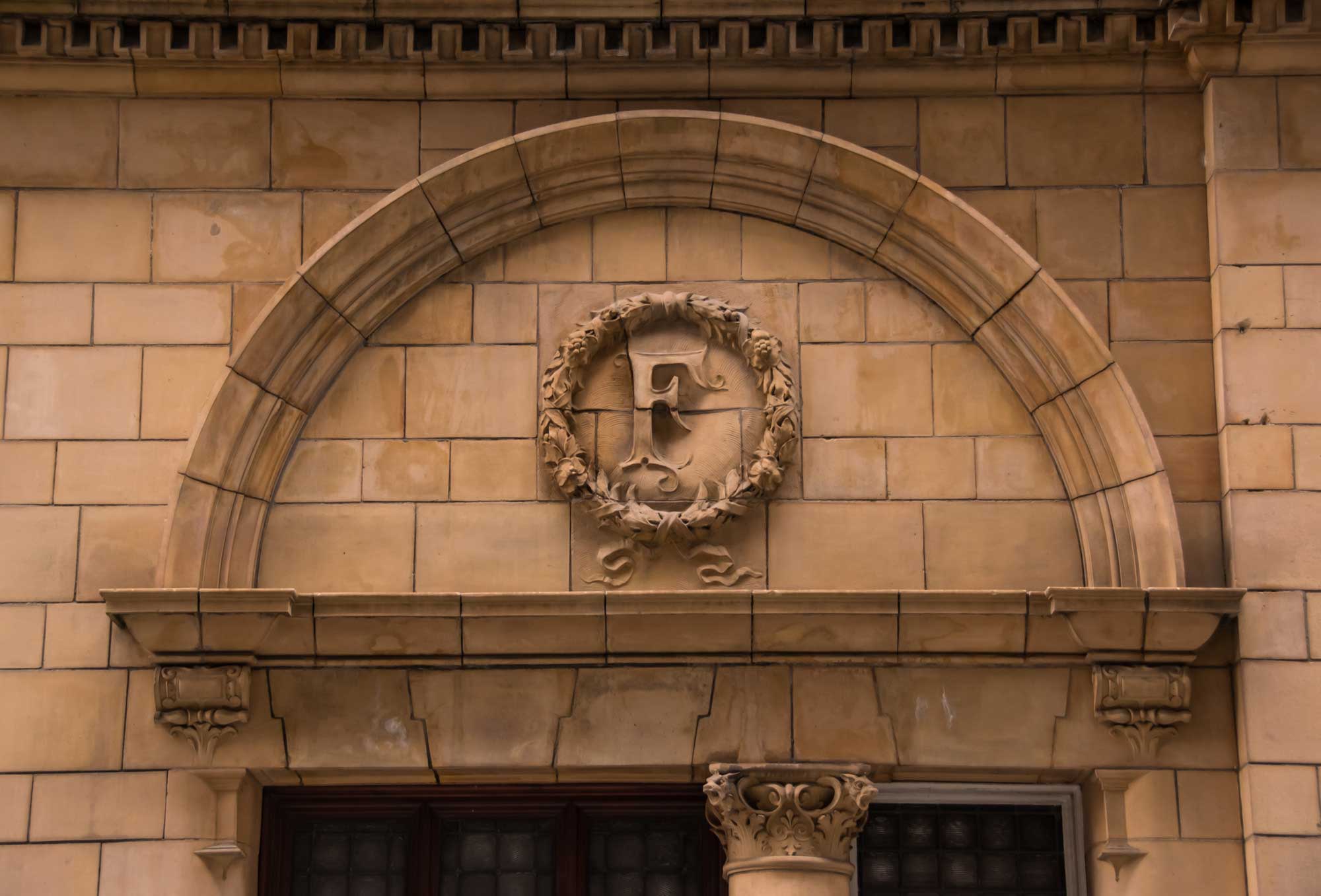
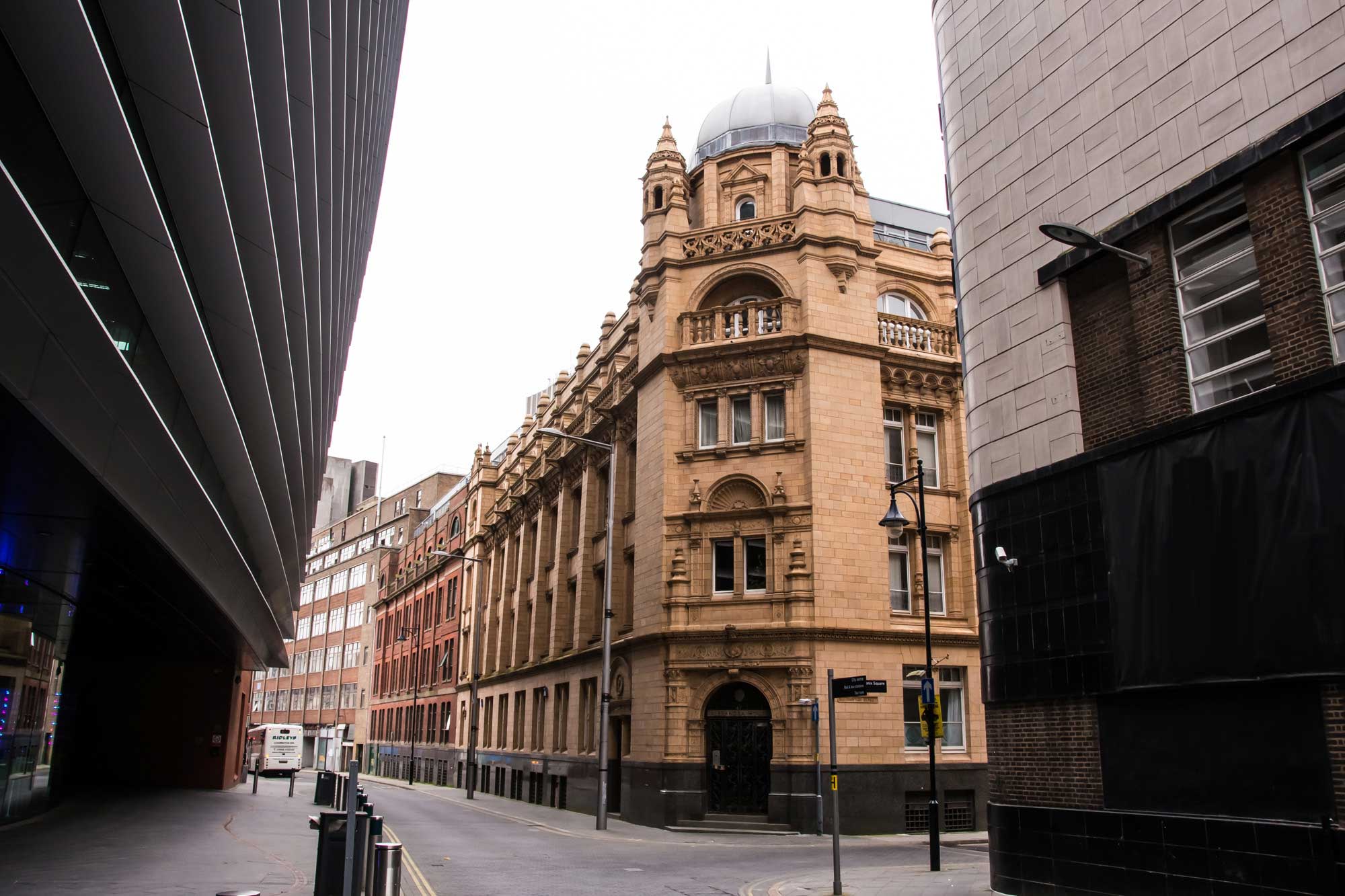
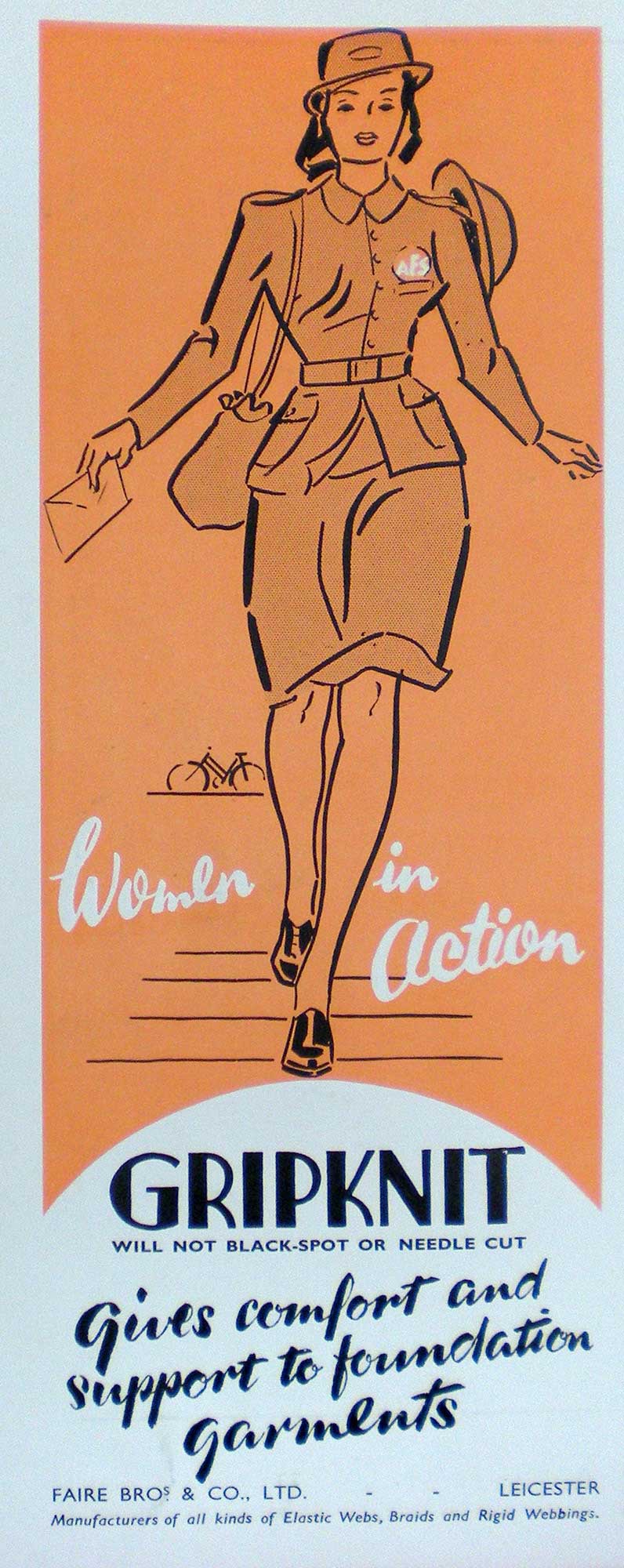
De Montfort University Special Collections
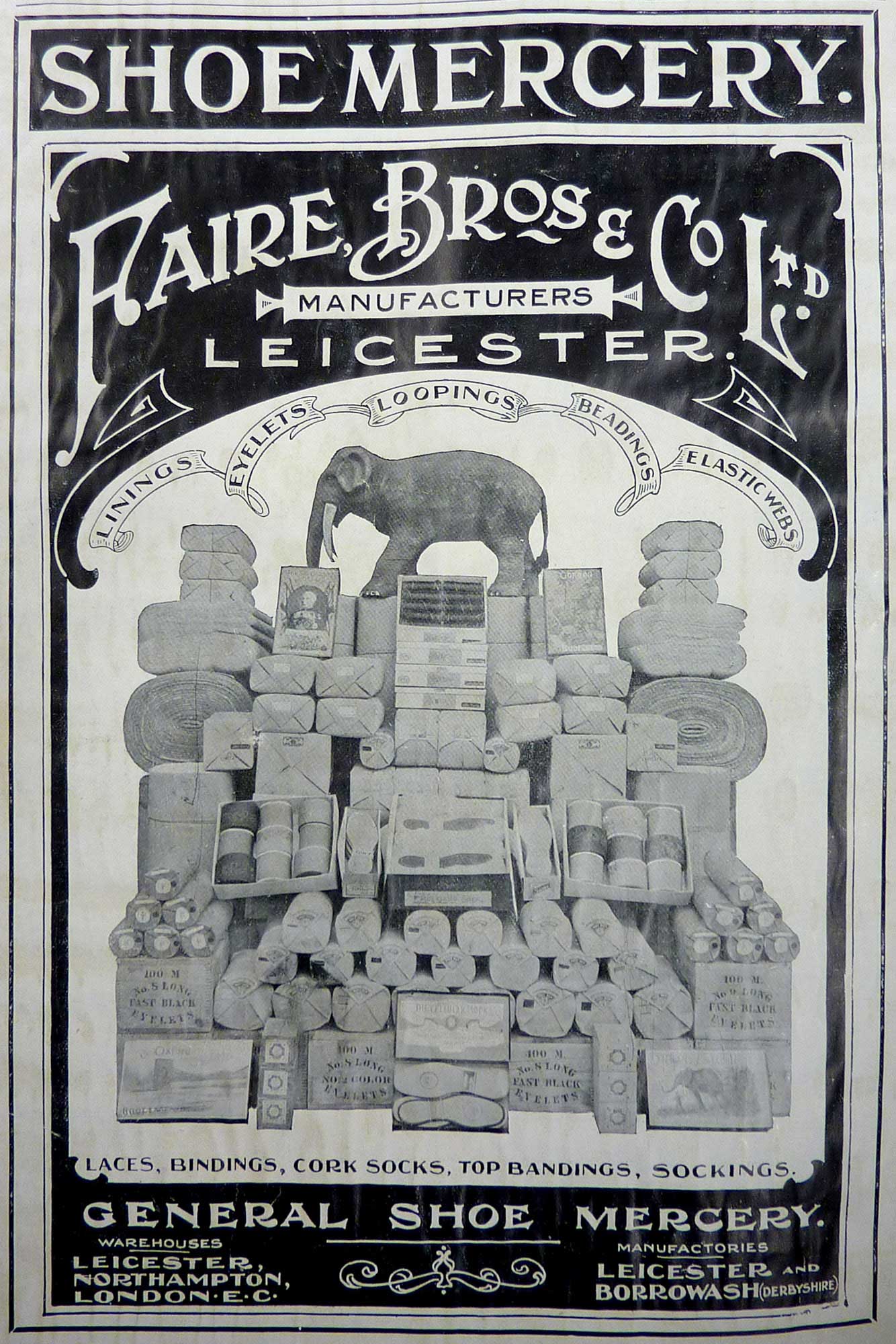
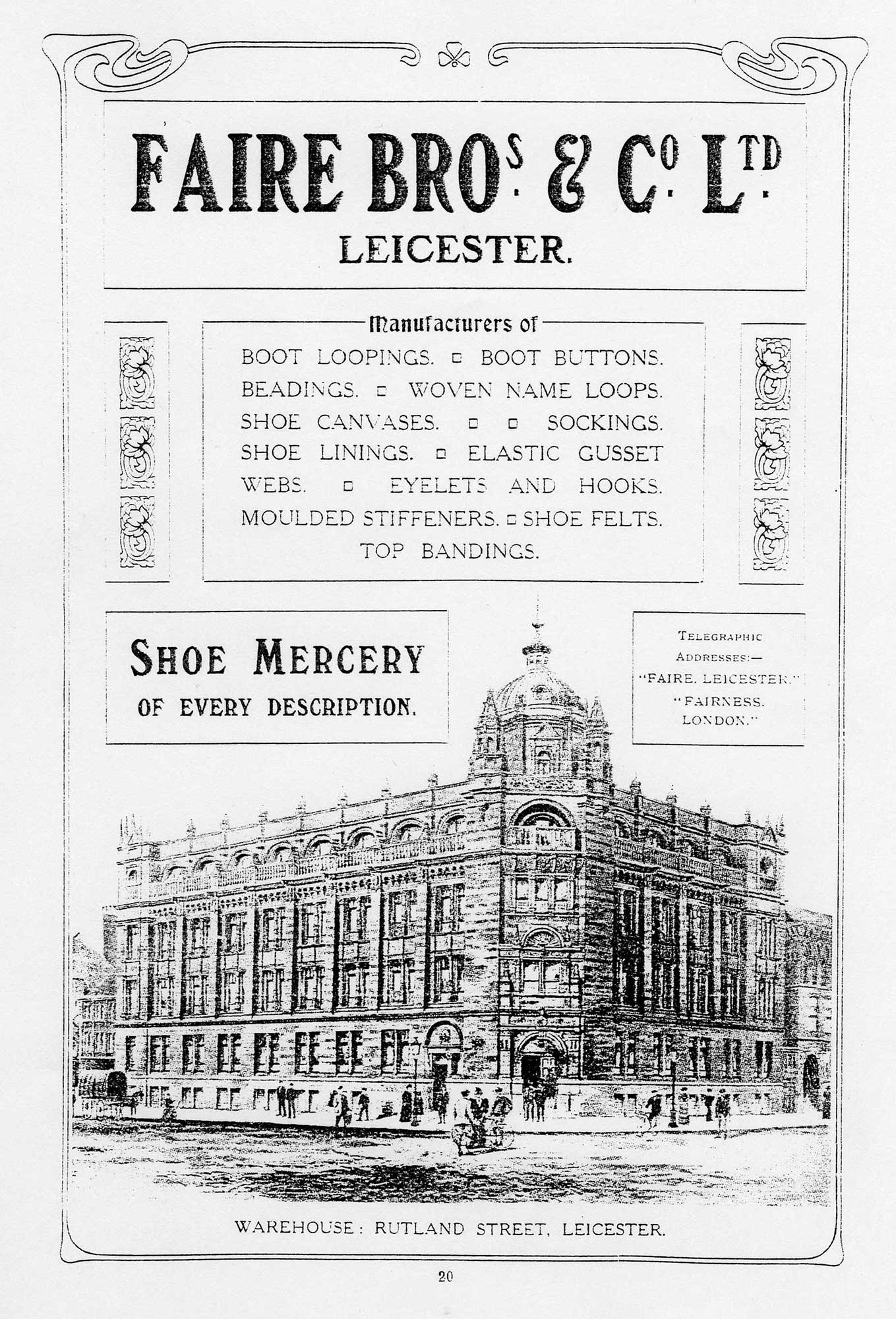
Roman Leicester
(47- 500) A military fort was erected, attracting traders and a growing civilian community to Leicester (known as Ratae Corieltauvorum to the Romans). The town steadily grew throughout the reign of the Romans.
Medieval Leicester
(500 – 1500) The early years of this period was one of unrest with Saxon, Danes and Norman invaders having their influences over the town. Later, of course, came Richard III and the final battle of the Wars of the Roses was fought on Leicester’s doorstep.
-
The Castle Motte1068

-
Leicester Cathedral1086

-
St Mary de Castro1107

-
Leicester Abbey1138

-
Leicester Castle1150

-
Grey Friars1231

-
The Streets of Medieval Leicester1265

-
Leicester Market1298

-
Trinity Hospital and Chapel1330

-
Bow Bridgecirca 1350

-
Church of the Annunciation1353

-
John O’Gaunt’s Cellar1361

-
St John's Stone1381

-
Leicester Guildhall1390

-
The Magazine1400

-
The Blue Boar Inn1400

-
The High Cross1577

Tudor & Stuart Leicester
(1500 – 1700) The wool trade flourished in Leicester with one local, a former mayor named William Wigston, making his fortune. During the English Civil War a bloody battle was fought as the forces of King Charles I laid siege to the town.
Georgian Leicester
(1700 – 1837) The knitting industry had really stared to take hold and Leicester was fast becoming the main centre of hosiery manufacture in Britain. This new prosperity was reflected throughout the town with broader, paved streets lined with elegant brick buildings and genteel residences.
-
Great Meeting Unitarian Chapel1708

-
The Globe1720

-
17 Friar Lane1759

-
Black Annis and Dane Hills1764

-
Leicester Royal Infirmary1771

-
New Walk1785

-
Freemasons’ Hall1790

-
Gaols in the City1791

-
Friars Mill1794

-
City Rooms1800

-
Development of Highfields1800

-
Wesleyan Chapel1815

-
20 Glebe Street1820

-
Charles Street Baptist Chapel1830

-
Glenfield Tunnel1832

-
James Cook1832

Victorian Leicester
(1837 – 1901) The industrial revolution had a huge effect on Leicester resulting in the population growing from 40,000 to 212,000 during this period. Many of Leicester's most iconic buildings were erected during this time as wealthy Victorians made their mark on the town.
-
Leicester Union Workhouse1839

-
Campbell Street and London Road Railway Stations1840

-
The Vulcan Works1842

-
Belvoir Street Chapel1845

-
Welford Road Cemetery1849

-
Leicester Museum & Art Gallery1849

-
King Street1850

-
Cook’s Temperance Hall & Hotel1853

-
Amos Sherriff1856

-
Weighbridge Toll Collector’s House1860

-
4 Belmont Villas1862

-
Top Hat Terrace1864

-
Corah and Sons - St Margaret's Works1865

-
Kirby & West Dairy1865

-
The Clock Tower1868

-
Wimbledon Works1870

-
The Leicestershire Banking Company1871

-
St Mark’s Church and School1872

-
Victorian Turkish Baths1872

-
The Town Hall1876

-
Central Fire Stations1876

-
Aylestone Road Gas Works and Gas Museum1879

-
Gas Workers Cottages1879

-
Leicestershire County Cricket Club1879

-
Welford Road Tigers Rugby Club1880

-
Secular Hall1881

-
Development of Highfields1800

-
Abbey Park1881

-
Abbey Park Buildings1881

-
Victoria Park and Lutyens War Memorial1883

-
Leicester Fosse FC 18841884

-
Leicester Coffee and Cocoa Company Coffee Houses1885

-
St Barnabas Church and Vicarage1886

-
Abbey Pumping Station1891

-
Luke Turner & Co. Ltd.1893

-
West Bridge Station1893

-
Thomas Cook Building1894

-
The White House1896

-
Alexandra House1897

-
Leicester Boys Club1897

-
Grand Hotel and General Newsroom1898

-
Highfield Street Synagogue1898

-
Western Park1899

-
Asfordby Street Police Station1899

-
Leicester Central Railway Station1899

Edwardian Leicester
(1901 – 1910) Electric trams came to the streets of Leicester and increased literacy among the citizens led to many becoming politicised. The famous 1905 ‘March of the Unemployed to London’ left from Leicester market when 30,000 people came to witness the historic event.
-
YMCA Building1900

-
The Palace Theatre1901

-
Pares's Bank1901

-
Coronation Buildings1902

-
Halfords1902

-
High Street1904

-
George Biddles and Leicester's Boxing Heritage1904

-
Municipal Library1905

-
Leicester Boys Club1897

-
The Marquis Wellington1907

-
Guild Hall Colton Street1909

-
Women's Social and Political Union Shop1910

-
Turkey Café1901

Early 20th Century Leicester
(1910 – 1973) The diverse industrial base meant Leicester was able to cope with the economic challenges of the 1920s and 1930s. New light engineering businesses, such as typewriter and scientific instrument making, complemented the more traditional industries of hosiery and footwear manufacturing.
-
Dryad Handicrafts1912

-
De Montfort Hall1913

-
Leicester During the First World War1914

-
Fox’s Glacier Mints1918

-
Statue of Liberty1919

-
Housing in Saffron Lane1924

-
Winstanley House1925

-
Housing in North Braunstone1926

-
Lancaster Road Fire Station1927

-
The Little Theatre1930

-
Saffron Hill Cemetery1931

-
Braunstone Hall Junior School1932

-
Former City Police Headquarters1933

-
Savoy Cinema1937

-
Eliane Sophie Plewman1937
-
City Hall1938

-
Athena - The Odeon Cinema1938

-
The Blitz in Highfields1940

-
Freeman, Hardy and Willis - Leicester Blitz1940

-
Leicester Airport1942

-
Leicester’s Windrush Generations1948

-
Netherhall Estate1950
-
Housing at Eyres Monsell1951

-
Silver Street and The Lanes1960

-
Bostik1960

-
Auto-Magic Car Park (Lee Circle)1961

-
University of Leicester Engineering Building1963

-
Sue Townsend Theatre1963

-
Central Mosque1968

-
Belgrave Flyover1973

Modern Leicester
(1973 – present day) Industry was still thriving in the city during the 1970s, with the work opportunities attracting many immigrants from all over the world. While industry has declined in recent years, excellent transport links have made Leicester an attractive centre for many businesses. The City now has much to be proud of including its sporting achievements and the richness of its cultural heritage and diversity.
-
Haymarket Theatre1973

-
The Golden Mile1974

-
Acting Up Against AIDS1976

-
Belgrave Neighbourhood Centre1977

-
Diwali in Leicester1983

-
Leicester Caribbean Carnival1985

-
Samworth Brothers1986

-
Jain Centre1988

-
Guru Nanak Dev Ji Gurdwara1989

-
King Power Stadium2002

-
LCB Depot2004

-
Curve2008

-
BAPS Shri Swaminarayan Mandir2011

-
Makers Yard2012

- Roman Leicester
- Medieval Leicester
- Tudor & Stuart Leicester
- Georgian Leicester
- Victorian Leicester
- Edwardian Leicester
- Early 20th Century Leicester
- Modern Leicester
A Working Town















































































































































